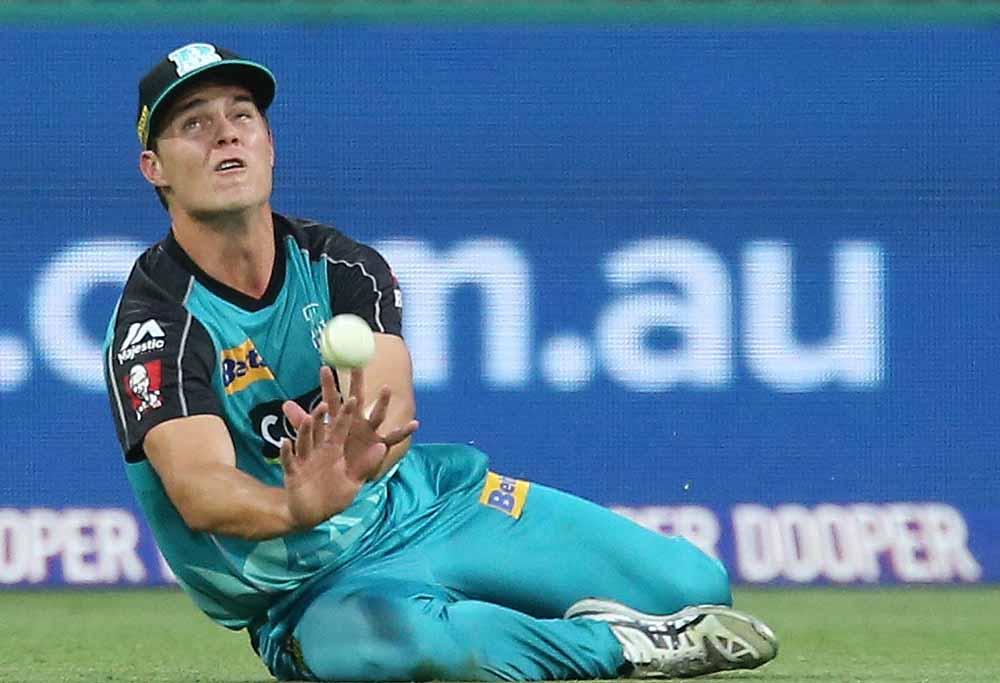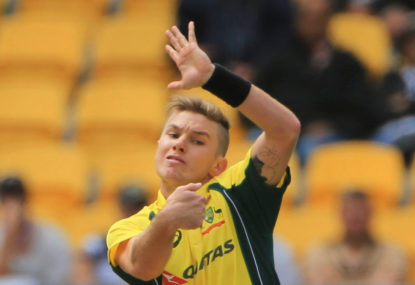It’s now been ten years since Shane Warne retired from international cricket and in that time, Cricket Australia has unearthed a total of zero competent leg-spinners.
In total, Australia has handed twelve spinners baggy greens since Warne’s retirement, which doesn’t include Nathan Hauritz, Stuart MacGill and Brad Hogg, who were also used as replacements at times.
Nathan Lyon currently has made the position his own with 247 wickets in 67 Tests. But he remains part of the issue facing Cricket Australia in this day and age.
Lyon is a finger-spinner who simply does not impart enough turn or bounce on the ball during delivery to have a serious impact outside of the subcontinent.
In the recent home Test series against South Africa, Lyon struggled tremendously, taking only six wickets at an average of 57.66. Lyon really struggled in Perth and Hobart – both traditionally non-spinning wickets – which underlines the issue he currently poses.
[latest_videos_strip category=”cricket” name=”Cricket”]
For Australia to return to their dominant era of the early 2000s, they must show faith in a young leg-spinner and allow them time to grow within the team.
Currently, Australia has three leggies playing consistently for their state sides who have been in and out of the Australian setup throughout the past few years. These players are Tasmania’s Cameron Boyce, South Australia’s Adam Zampa and Queensland’s Mitchell Swepson.
Cameron Boyce
The oldest player on this list, at 28 years of age, Boyce has long been considered Australia’s next leg-spinning option since former Test great Ashley Mallett declared him to be the “best spinner in Australia not playing first class cricket” back in 2007.
As a result, Boyce, then playing in Queensland, was watched closely by the Bulls organisation until he was raced into the side for the Sheffield Shield final of the 2009-10 season. Boyce performed well in that final, taking 6/181 in the second innings which got Australian selectors interested.
Since then, Boyce has unfortunately failed to fully capitalise on his bright start, currently sitting with a record of 96 wickets in 48 games, at an average of just under 50. Boyce has, however, found success in the shortest form of the game, being a consistent performer for the Hobart Hurricanes and being rewarded with seven Twenty20 caps for the Australian side.
Boyce is also an exceptional athlete and is a real asset in the field, owing greatly to his early years in indoor cricket.
Boyce is probably the least likely of the three on this list to make the Test side. Most likely, he’s a long term consideration for the short forms of the game.
Boyce should at least be considered for the Test side as he has been around for years and offers seven years of first class experience. Not every spinner Australia has ever picked in the past has offered exemplary first class resumes and Boyce may be the diamond in the rough selection the national side needs going forward.
Adam Zampa
Zampa probably has the best resume of the three in terms of being selected as Australia’s next Test leg-spinner. Zampa is currently the first-choice spinner in both short forms of the game and has performed well.

(AAP Image/SNPA, John Cowpland)
In 24 ODIs, Zampa has taken 36 wickets at an average of under 30, with six three-wicket hauls. In T20I’s, he has taken 14 wickets in ten games at the outstanding average of 15.14.
While Zampa offers a tremendous resume from his time in the short form, he doesn’t have the best record in first class cricket. In 30 matches, Zampa has taken 83 wickets, but at an inflated average of 46.26.
Zampa especially struggled in last year’s Sheffield Shield final, taking a combined 3/261 as Victoria claimed victory by holding South Australia to a draw.
Zampa does, however, possess a respectable strike rate in first class cricket, taking a wicket every 68 balls which highlights how dangerous leg-spinners can be. Even though Zampa concedes around four runs per over in the long form of the game, he is likely to take you a wicket each spell he bowls, which makes him a valuable commodity.
Mitchell Swepson
Finally, to the youngest and probably most likely player to make the cut from this list. Mitchell Swepson is currently in the Australian squad set play Bangladesh in a two-match series.
At 23 years old, Swepson is extremely raw, but possesses quite the first class record at this tender age. In just two seasons, Swepson has played 14 games, taking 41 wickets at the very respectable average of 32.82 and a strike rate of under 50.
Incidentally, the great Shane Warne was also 23 years of age when he made his rather forgettable debut against India all those years ago.
Warne has showed support for Swepson, calling for him to make his debut in the Australian Side. Warne said he “wasn’t ready at the time the selectors threw me into the playing XI versus India, but the experience helped me for the rest of my career.”
Warne is right, the selectors need to take a leap of faith with Swepson who possesses real upside for the Australian side both home and abroad in the future. His ability to impart turn and bounce on the ball makes him a real asset in the long form of the game.

(AAP Image/Craig Golding)
He’s also shown in the shortest form of the game that he has the ability to bowl accurately consistently with very few long hops and full tosses. Swepson is the complete package for a leg-spinner of his age and can become Australia’s next great spinner if the selectors can show some faith in him.
In Test cricket, to win a game, you have to take 20 wickets. It’s that simple.
If Australia are serious about returning the side to the number one status it enjoyed a decade ago, then an attacking leg-spinner is a must heading forward.
This list is not to suggest that Australia should only look at these three leggies heading forward. But as of right now, all three are under 30 years of age and have been in and around the Australian set up in the past.
They’ve shown enough for the selectors to press the go button in the near future. Australia owe it to themselves to give them a go.































































































